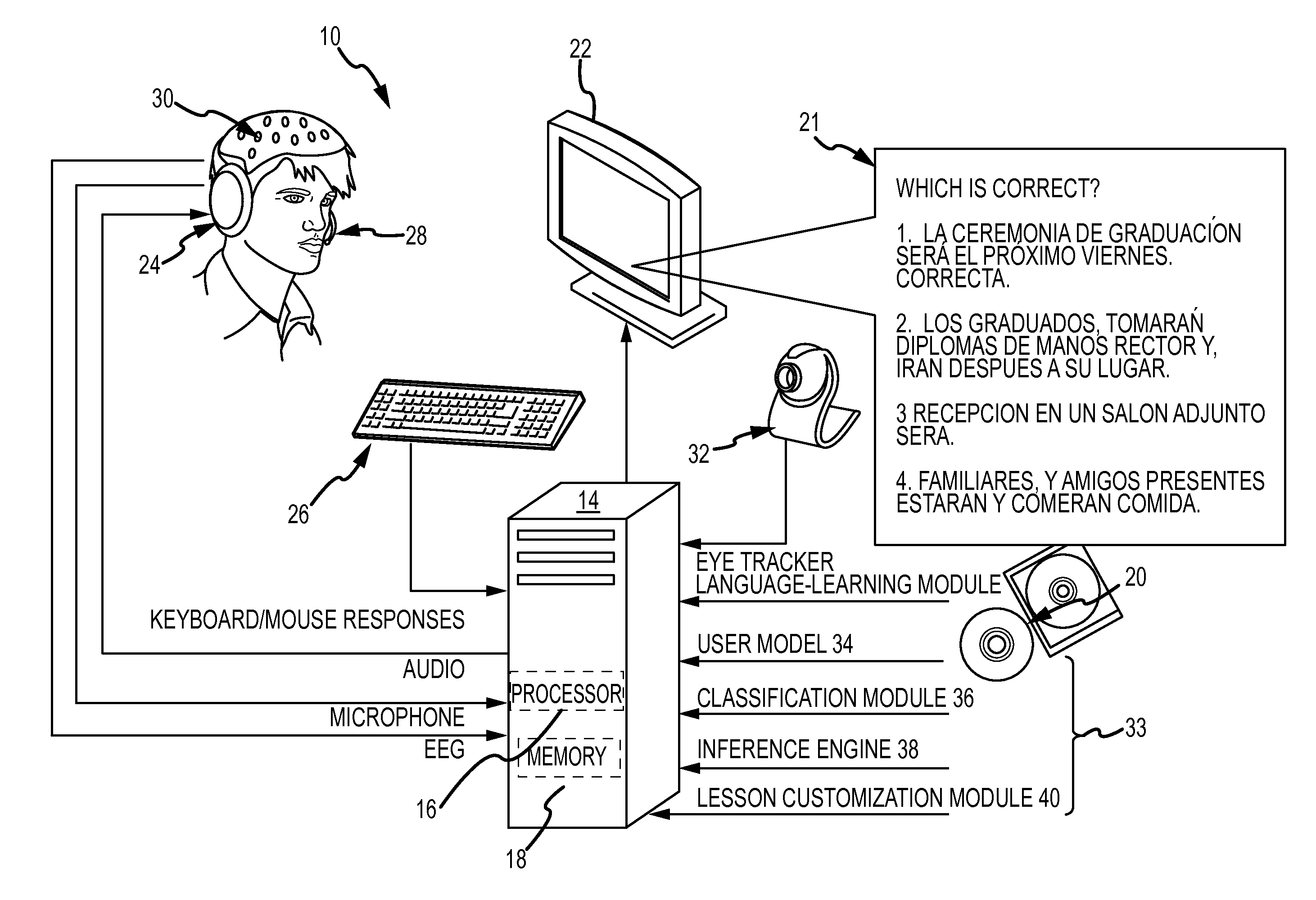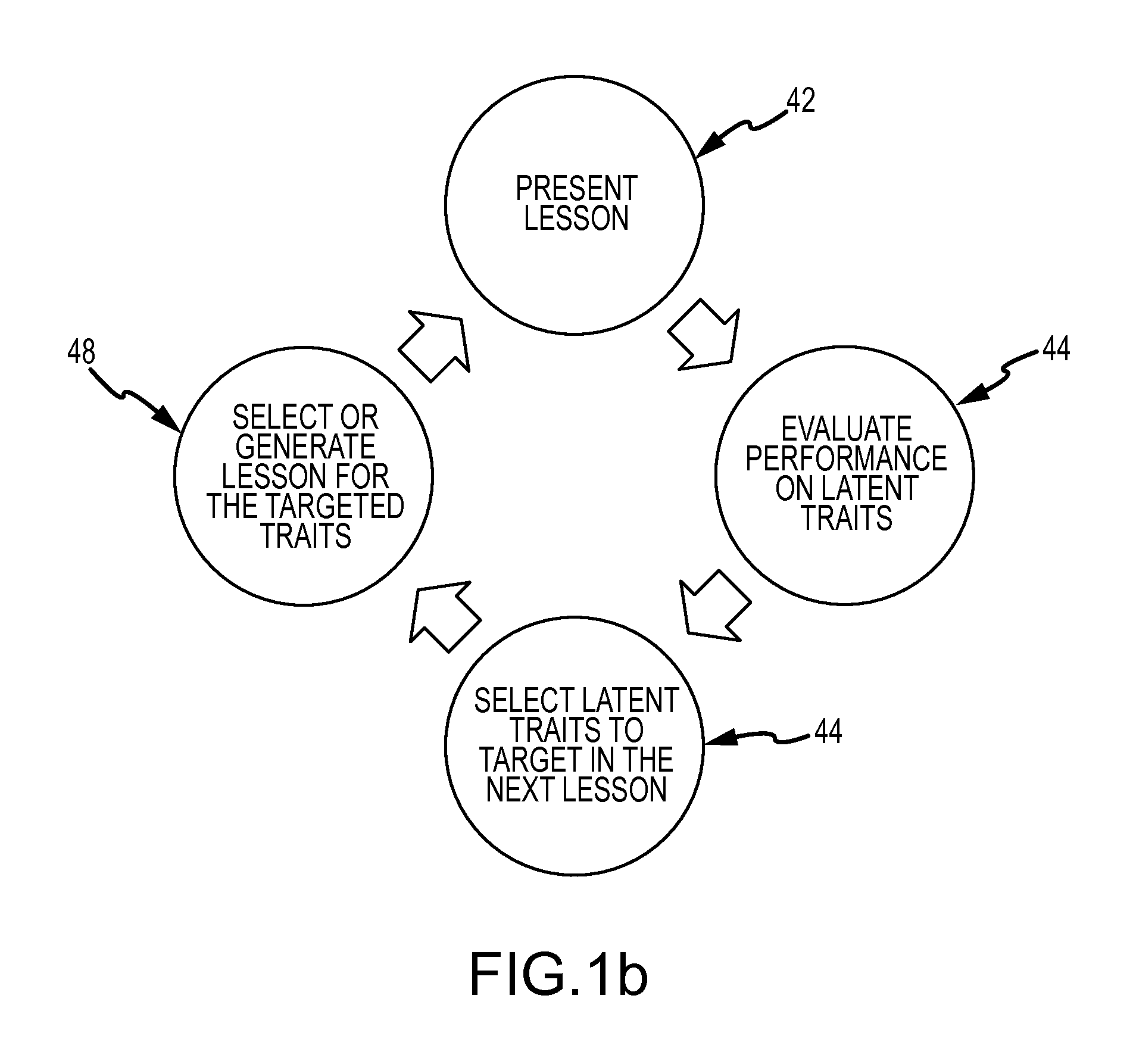Eeg-based acceleration of second language learning
- Summary
- Abstract
- Description
- Claims
- Application Information
AI Technical Summary
Benefits of technology
Problems solved by technology
Method used
Image
Examples
Embodiment Construction
[0027]EEG analysis dramatically increases the information collected from a learner during language learning and the evidence available to discern the source of learning difficulty. Interactive language-learning systems collect only the learner's typed or spoken responses to specific language queries. An EEG-based approach assesses language-learning performance continuously with every fixation (eye movement) and phoneme (atomic component of audible speech) and correlates each brain response with the skills tested by a specific portion of the lesson.
[0028]EEG-based acceleration of second-language learning is accomplished by measuring via single-trial EEG a learner's cognitive response to the presentation (visual or auditory) of language-learning materials and updating a user model of latent traits related to language-learning skills in accordance with the cognitive response. The cognitive response may be associated with a specific ERP or temporal pattern of ERPs. The updated states of...
PUM
 Login to View More
Login to View More Abstract
Description
Claims
Application Information
 Login to View More
Login to View More - Generate Ideas
- Intellectual Property
- Life Sciences
- Materials
- Tech Scout
- Unparalleled Data Quality
- Higher Quality Content
- 60% Fewer Hallucinations
Browse by: Latest US Patents, China's latest patents, Technical Efficacy Thesaurus, Application Domain, Technology Topic, Popular Technical Reports.
© 2025 PatSnap. All rights reserved.Legal|Privacy policy|Modern Slavery Act Transparency Statement|Sitemap|About US| Contact US: help@patsnap.com



